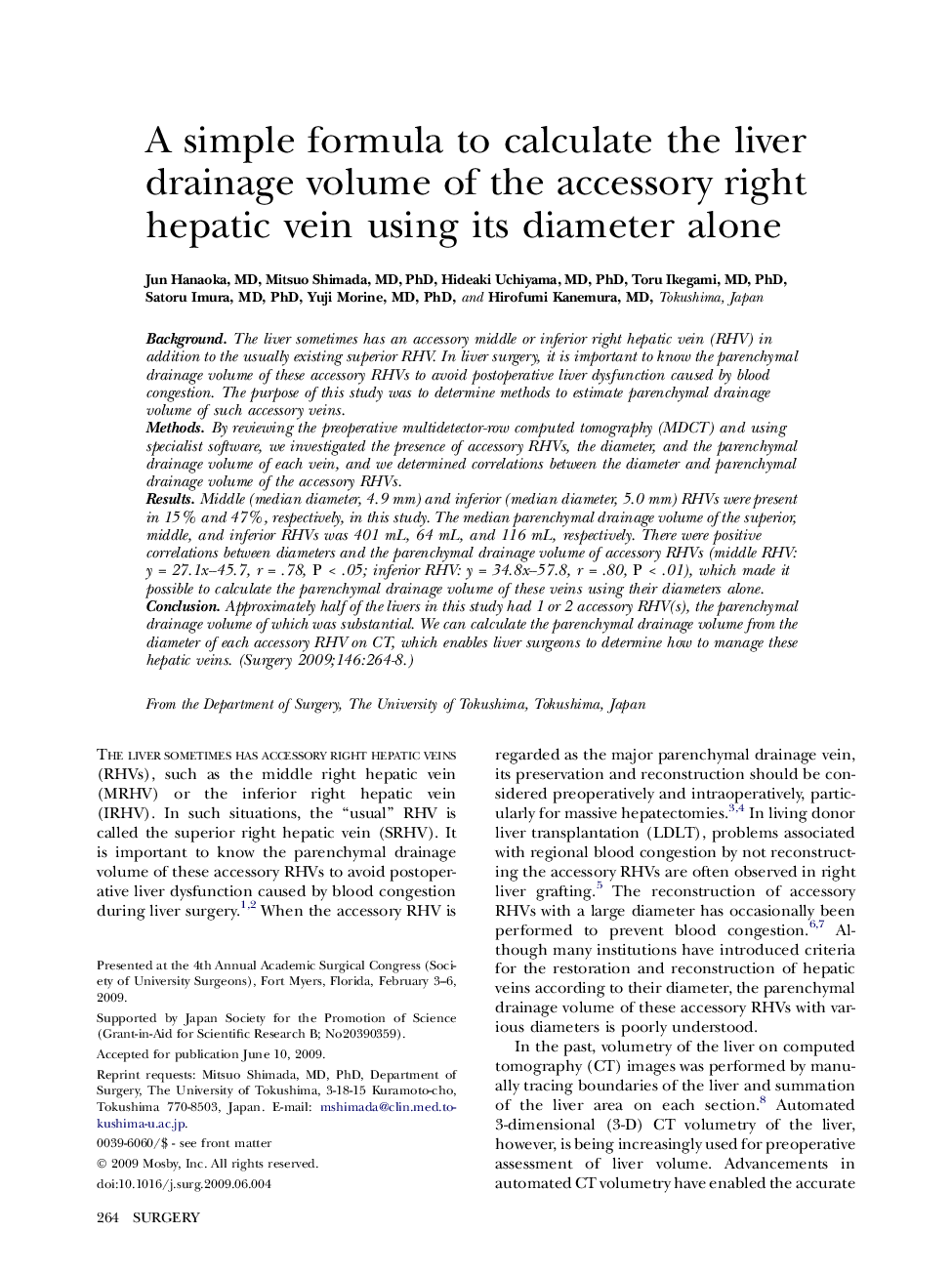| Article ID | Journal | Published Year | Pages | File Type |
|---|---|---|---|---|
| 4309391 | Surgery | 2009 | 5 Pages |
BackgroundThe liver sometimes has an accessory middle or inferior right hepatic vein (RHV) in addition to the usually existing superior RHV. In liver surgery, it is important to know the parenchymal drainage volume of these accessory RHVs to avoid postoperative liver dysfunction caused by blood congestion. The purpose of this study was to determine methods to estimate parenchymal drainage volume of such accessory veins.MethodsBy reviewing the preoperative multidetector-row computed tomography (MDCT) and using specialist software, we investigated the presence of accessory RHVs, the diameter, and the parenchymal drainage volume of each vein, and we determined correlations between the diameter and parenchymal drainage volume of the accessory RHVs.ResultsMiddle (median diameter, 4.9 mm) and inferior (median diameter, 5.0 mm) RHVs were present in 15% and 47%, respectively, in this study. The median parenchymal drainage volume of the superior, middle, and inferior RHVs was 401 mL, 64 mL, and 116 mL, respectively. There were positive correlations between diameters and the parenchymal drainage volume of accessory RHVs (middle RHV: y = 27.1x–45.7, r = .78, P < .05; inferior RHV: y = 34.8x–57.8, r = .80, P < .01), which made it possible to calculate the parenchymal drainage volume of these veins using their diameters alone.ConclusionApproximately half of the livers in this study had 1 or 2 accessory RHV(s), the parenchymal drainage volume of which was substantial. We can calculate the parenchymal drainage volume from the diameter of each accessory RHV on CT, which enables liver surgeons to determine how to manage these hepatic veins.
